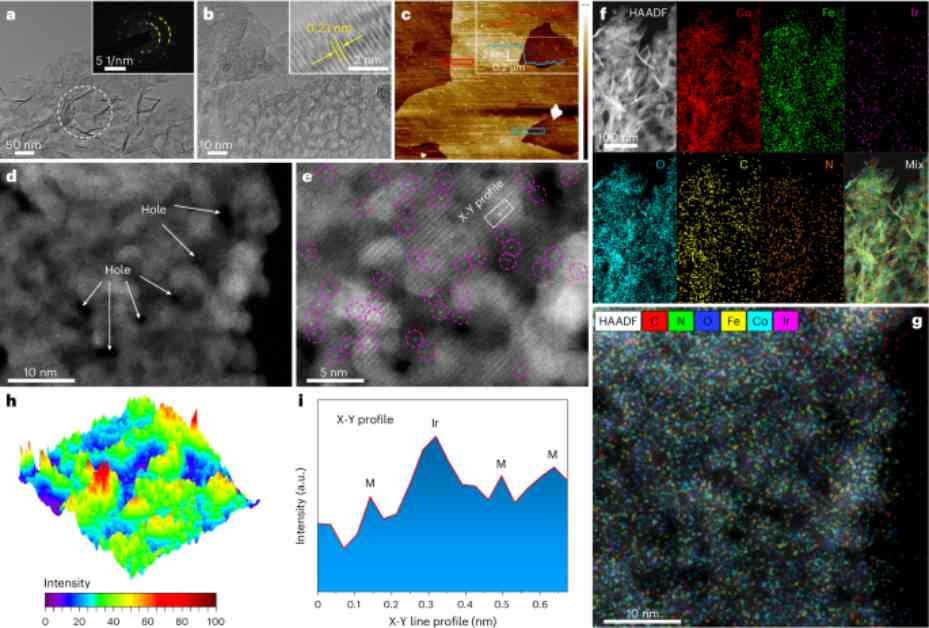Electrochemical water splitting is a promising green pathway for large-scale hydrogen production. However, the oxygen evolution reaction (OER) is a major bottleneck due to its sluggish nature and the high overpotentials required. To address this issue, researchers have been exploring high-performance OER catalysts, particularly those based on Co-, Fe-, and Ni-based metal oxyhydroxides/hydroxides.
In recent studies, loading noble-metal single atoms onto metal oxyhydroxides/hydroxides has shown promise in reducing OER overpotentials to below 200 mV. For example, Ir single atoms loaded onto CoFe hydroxides with out-of-plane coordination with dimethylimidazole (MI) achieved an OER overpotential of only 198 mV. This approach has shown significant improvements in catalytic performance by redistributing charge around Ir sites, shifting d-band centers, and reducing reaction energy barriers.
Furthermore, by exploring the interplay between single-atom coordination, bonding, and catalytic performance, researchers have demonstrated the effectiveness of out-of-plane ligand coordination in enhancing the electrocatalytic activity of various electrochemical reactions. For example, axial coordination of Pt single atoms on NiFe hydroxide improved water dissociation and increased hydrogen production in alkaline media.
The Ir1/(Co,Fe)-OH/MI catalyst exhibited impressive OER performance, including low overpotentials, small Tafel slopes, high areal activity, and mass activity. Additionally, the catalyst demonstrated stability over 120 hours at various current densities. Density functional theory calculations revealed the mechanisms behind the enhanced OER performance, showcasing the impact of MI coordination on Ir and adjacent Co sites.
In conclusion, the study introduces a novel method to prepare Ir single atoms on CoFe hydroxide supports with out-of-plane coordination with MI molecules. This approach significantly enhances OER performance, showcasing the potential of single-atom catalysts for efficient water splitting and hydrogen production applications.
This research provides valuable insights into the development of advanced catalytic materials for sustainable energy applications and highlights the importance of precise coordination and structural design in optimizing electrocatalytic performance. Further exploration of single-atom catalysts and their coordination with ligands holds great promise for future advancements in clean energy technologies.













